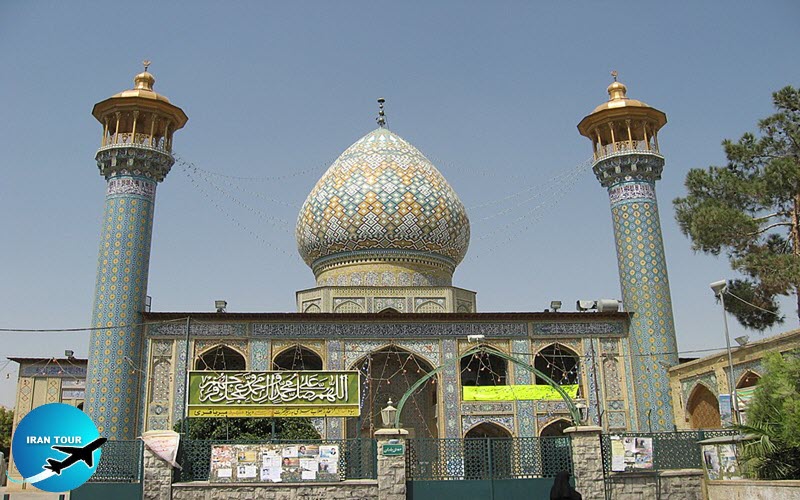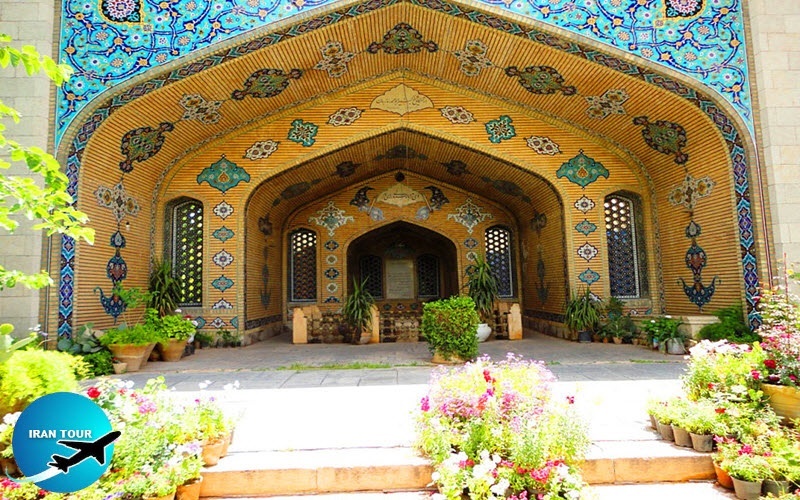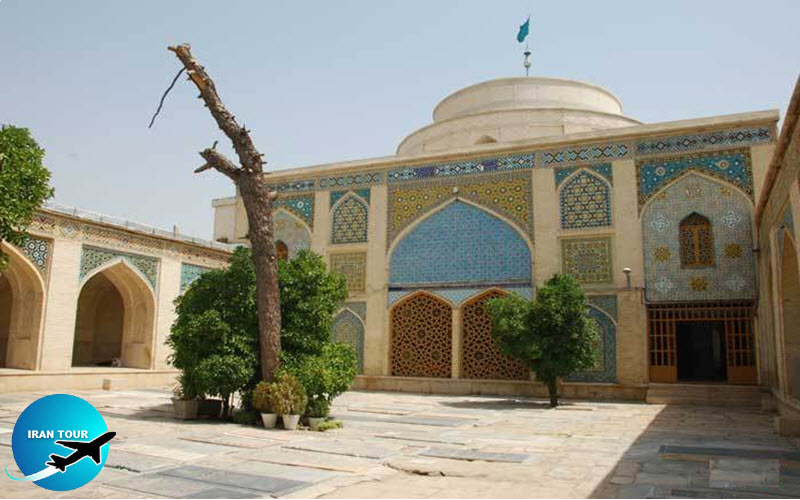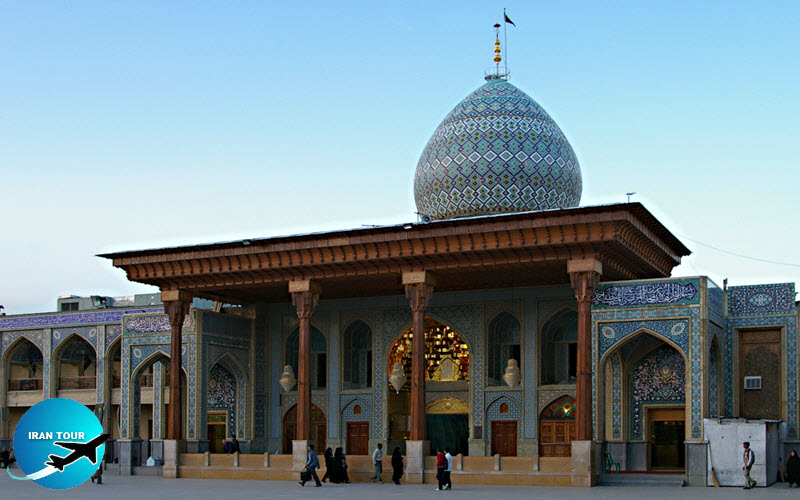Copyright 2020 - 2021 irantour.tours all right reserved
Designed by Behsazanhost
Shiraz Mausoleums
Imamzadeh Seyed Ala al-Din Hossein(Astāneh)
Āstāneh (“The threshold”) of Seyed Ala al-Din Hossein is the second most important pilgrimage center in Shiraz after Shah Cheragh. This shrine is the last resting place of the Seventh Shiite Imam's son and Shah Cheragh's stepbrother. Legend has it that Seyed Ala al-Din Hossein came to Iran in the early 9th century A.D. to support another stepbrother, Reza, the Eighth Shiite Imam, and was about to set out for Mashhad when he was treacherously murdered in one of Shiraz gardens by the stooges of the local governor. Seyed Ala al-Din's followers cautiously buried his body on the site where his mausoleum now stands.
 |
Imamzadeh Seyed Ala al-Din Hossein(Astāneh)
Āstāneh (“The threshold”) of Seyed Ala al-Din Hossein is the second most important pilgrimage center in Shiraz after Shah Cheragh. This shrine is the last resting place of the Seventh Shiite Imam's son and Shah Cheragh's stepbrother. Legend has it that Seyed Ala al-Din Hossein came to Iran in the early 9th century A.D. to support another stepbrother, Reza, the Eighth Shiite Imam, and was about to set out for Mashhad when he was treacherously murdered in one of Shiraz gardens by the stooges of the local governor. Seyed Ala al-Din's followers cautiously buried his body on the site where his mausoleum now stands.
The first shrine on Seyed Ala al-Din Hossein's burial spot was built in the late 14th century. This simple structure was rebuilt in 1517 - the date mentioned in one of the mausoleum's historical inscriptions. Under Shah Tahmasp I Safavid, the structure was expanded and decorated by Mirza Ali, a painter from Medina, who also bestowed several properties on the shrine to provide it with revenue. During the Zand and Qajar periods, the earthquakes caused considerable damage to the edifice, which was rebuilt several times. However, despite efforts, the threat of the dome's crumbling increased daily until in 1950 it was taken down. Subsequently, in 1952, a lighter dome with an iron skeleton was placed in position. During the ensuing years, this was covered with enameled tiles to recreate the appearance of the original structure. In 1967, a high clock tower was built to the south of the building.
 |
Ruzbehan's Tomb or Ārāmgāh-e Rūzbehān
Sheikh Abu Mohammad Ruzbehan ibn Abi Nasr was born in Fasa around 1128 A.D. Nothing is known about his early life, but he is said to have spent many years wandering around the world in quest of spiritual perfection. He subsequently came to Shiraz and preached for fifty years in the Old Congregational Mosque.
He spent his last years living the life of an ascetic in the mountains around the city. He died in 1209 and was buried on the premises of the khaneqah a modern
where he used to preach. The present mausoleum was built in 1967. It houses six graves, one of which (that on the right) belongs to the Sheikh, and the others to his descendants.
 |
Imamzadeh Ibrahim
Imamzadeh Ibrahim is one of the innumerable “tombs” of Ibrahim, son of the Seventh Shiite Imam, Musa Kazem, none of which in fact contains his bones. The shrine consists of two parts - an ancient section, and a newly built one. The ancient part of the complex was built by Zeki Khan, the Governor-general of Fars during the Zand period. It is entered by an old wooden door, which leads to an octagonal, brick-vaulted anteroom, on either side of which is a blind wall niche. The shrine stands along the north wing of the old courtyard, opposite a gallery supported by two stone pillars and a number of smaller rooms. Surrounding the courtyard on the west and east sides are the arcaded galleries which house the administrative sections and the family crypts. The sanctuary consists of a large, domed hall with four alcoves on each side. Different from the other shrines of Shiraz, the tomb, covered by an ornamental casket, occupies the south alcove. This is adorned with lavish Moqarnas encrusted with mosaic pieces. Beautiful mirror mosaic and stained-glass plates also cover the walls and ceiling of the domed central hall. The dome used to surmount Imamzadeh Ibrahim was also different from the rest of Shiraz's shrines. Unlike the bulbous cupolas characteristic of most pilgrimage places in Shiraz, this dome was round and double-shelled; today, however, it is dismantled. The north facade of the mausoleum, overlooking the modern courtyard, is decorated with vividly colored tiled panels with religious themes.
The central semicircular plate depicts paradise and hell, as well as scenes of the Karbala battle and Imam Hossein's martyrdom. To the left of the central panel, a tiled plate shows Imam Reza and Harun al-Rashid with a plate of poisoned grapes (in fact, it was Harun's son Mamun who poisoned the Eighth Shiite Imam). The scene to the right portrays Imam Musa ibn Jafar. The building of Imamzadeh Ibrahim is topped by two ancient Minarets.
*Imamzadeh Ibrahim is the only pilgrimage site in Shiraz that does not require women to put on a chador.
 |
Imāmzadeh Seyed Mir Mohammad
|In the corner of the courtyard of Shah Cheragh stands the mausoleum attributed to Seyed Mir Mohammad, brother of Shah Cheragh. A wooden portico, supported by four slender wooden columns, and decorated on the back wall with enameled tiles, forms the entrance to the building. The interior contains a spacious sanctuary, coated with green marble on the floor and dados and encrusted with colorful mirror pieces on the ceiling and walls. Stained glass mosaic windows and carved and inlaid doors are among the other elements of the structure's ornamentation. In accord with a tradition established in the pilgrimage sites of Shiraz, the tomb chamber is located in the northern alcove. It contains two graves: the first, that of Seyed Mir Mohammad, covered by a silver casket; and the other belonging to Imamzadeh Ibrahim, brother of Imam Reza and stepbrother of Mir Mohammad, and marked by an inlaid of sarcophagus.
The silver casket covering Seyed Mir Mohammad's tomb bears the date of 1889, but no exact information is available about the other sections of the building. However, it may be presumed that the original shrine dates from the sixteenth century, and efforts were made during the Zand and Qajar periods to repair and decorate it. The dome, covered with enameled tiles, is of the same bulbous shape that is customarily used for the Shiraz mausoleums; it has a narrow base over which the wide lower part of the dome boldly protrudes. Adjoining the sanctuary on the right is the mausoleum of Ayatollah Dastgheib, the preacher of Shiraz assassinated by Mujahidin radicals after the Islamic Revolution.
Mausoleum of Sheikh Yusuf Sarvestani
The structure is made of quadrangular stone blocks and is greatly influenced by Sasanid building traditions and some believe, Also it is the only remnant of the Ilkhanid period. The Tholth inscription around the upper part of the building is executed in raised stone letters, with turquoise tiles filling in the sunken interstices. This inscription is unique; there are no other examples of this art in Iran. It is the work of Yahya Jamali, a well-known calligraphist during the Jalayrid rule, and is dated 1351. It extols the value of the Koran and mentions the merits of Shah Sheikh Abu Eshaq Injuid.
- Details
- Category: Museums of Shiraz